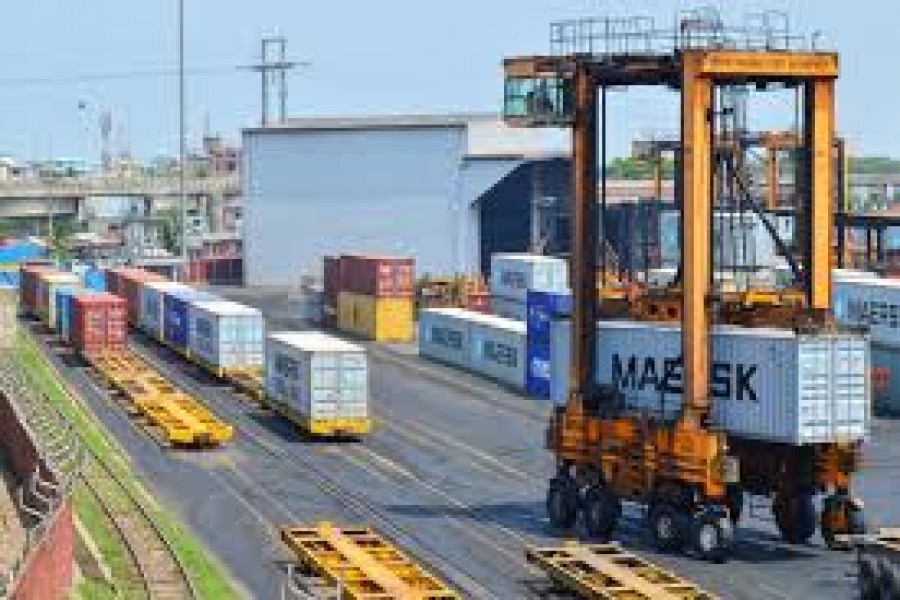CHATTOGRAM: The Chittagong Port Authority (CPA) turns 134 on Sunday. Like last year, the port will observe its founding in a simple manner tomorrow as the second wave of Covid-19 pandemic is lashing the country since early this year.
The history of Chittagong Port, one of the oldest natural ports in the subcontinent, dates back to the 4th century BC, the area was called 'Shetgang' where Arab, Chinese, European and Turkish traders settled.
The Chittagong area, which is now Chattogram, has been a recorded seaport since the 4th century BC.
In the 10th century A. D. Chittagong was annexed by the Arakan kingdom. In the last part of the 10th century, Chang Thump the king of Tripura conquered Chittagong. In the 11-12th century Chittagong was a part of Paga kingdom. King Damadar Dev ruled Chittagong during the 1st part of the 13th century.
From the writings of European traveller Marco Polo, it appears that in 1273 Chittagong was conquered by the Tatar Khans. In the beginning of the 14th century A. D. Chittagong was again annexed by the Arakan kingdom. In 1340 Fakhruddin Mubarak Shah, the ruler of Sonargaon conquered Chittagong.
From that time up to the emergence of the Pathan rule in the 16th century but with certain brief intervals, Chittagong was ruled by the sultans of Gour. During the year 1538-39 Sher Shah's General Noazish occupied Chittagong and till 1580 it was ruled by the Afghans. Though the Afghans left Bengal in 1575, Jamal Khan Panni ruled Chittagong up to 1580.
In 1580 Chittagong was recaptured by the Arakans and remained under the occupation till 1665, when Mughal General Shaestha Khan expelled Arakanese from Chittagong and the area from the south of the Feni River to the south of Shankha River was under the occupation of Mughals.
In 1756 Mughal General Adhu Khan of Dohazari Fort occupied the southern part of the river Shankha upto the north of Naf river from the Arakans.
In 1760 the Nawab of Bengal Mir Kashem gave away the ruler ship of this region to the East India Company through a mandate. From that time Chittagong was a part of India under the British rule till the partition of India.
With the partition of India in 1947, Chittagong Port was suddenly subjected to heavy pressure of more commercial activities, being the major sea port of the then East Pakistan. The railway and the port immediately undertook a short and long term plan and during the 1950s, nine jetties including seven new ones and a number of pontoon berths and moorings were constructed.
Such rapid development necessitated the reorganisation of the Port Management and as a result Chittagong Port Trust was formed in July, 1960, to do away with the dual administration of the sea port by the Port Commissioners and the Port Railway.
Under the 'Trust' system, quick development of the port was not found to be picking up to meet the challenge of modernisation and expansion. It was felt that more autonomy be given to the management for better administration and rapid development of the port.
In 1971, Bangladesh emerged as an independent country after a nine-month-long Liberation War against Pakistani occupation forces and Chittagong was retained as the main sea port of the country.
The 'Trust' system administration was abolished by an Ordinance in September 1976 and the Chittagong Port Authority came into being.
The CPA did not also arrange any big programme to celebrate its 133 years last year amid the first wave of the pandemic.
CPA secretary Omar Faruk told the FE on Saturday, "We are not arranging any programmes on April 25, 2021, due to coronavirus outbreak. We will observe the day with colourful programmes after the end of the crisis."
CPA chairman Rear Admiral M Shahjahan said the CPA handled over 92 per cent of export and import cargoes of Bangladesh last year.
He said there were 376 ships at Chittagong port in March this year. The port handled 269,446 TEUs containers and 110,42,818 metric tonnes bulk cargoes in March of the current year, he said.
The CPA chairman said, till March 2021, the growth of cargo handling was 7.7 per cent.
"Chittagong sea port obtained 58th position among the ports of the world regarding the handling of containers. We are working to materialise the 'Vision 2041 of Prime Minister (Sheikh Hasina). We have already taken numerous projects for development of the port which is undergoing now," he noted.
He informed that a total of 366 ships arrived at the port in March of last year while it handled 2,49,669 TEUs containers and 10,264,402 metric tonnes bulk cargoes in the same month of 2020.
The container handling growth rate was 2.9 per cent in last fiscal year, he added.
CPA Md Jafar Alam said: "(like last year) the port workers, staff and officials are discharging their duties this year amid the rapid spread of coronavirus even risking their lives."
"The staff and workers work hard even on government holidays during the pandemic which caused an increase in growth rate of handling of cargoes and containers," he added.


